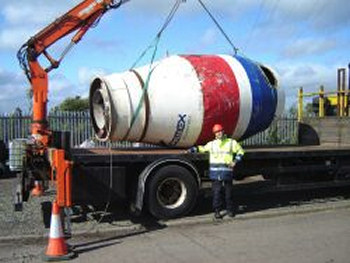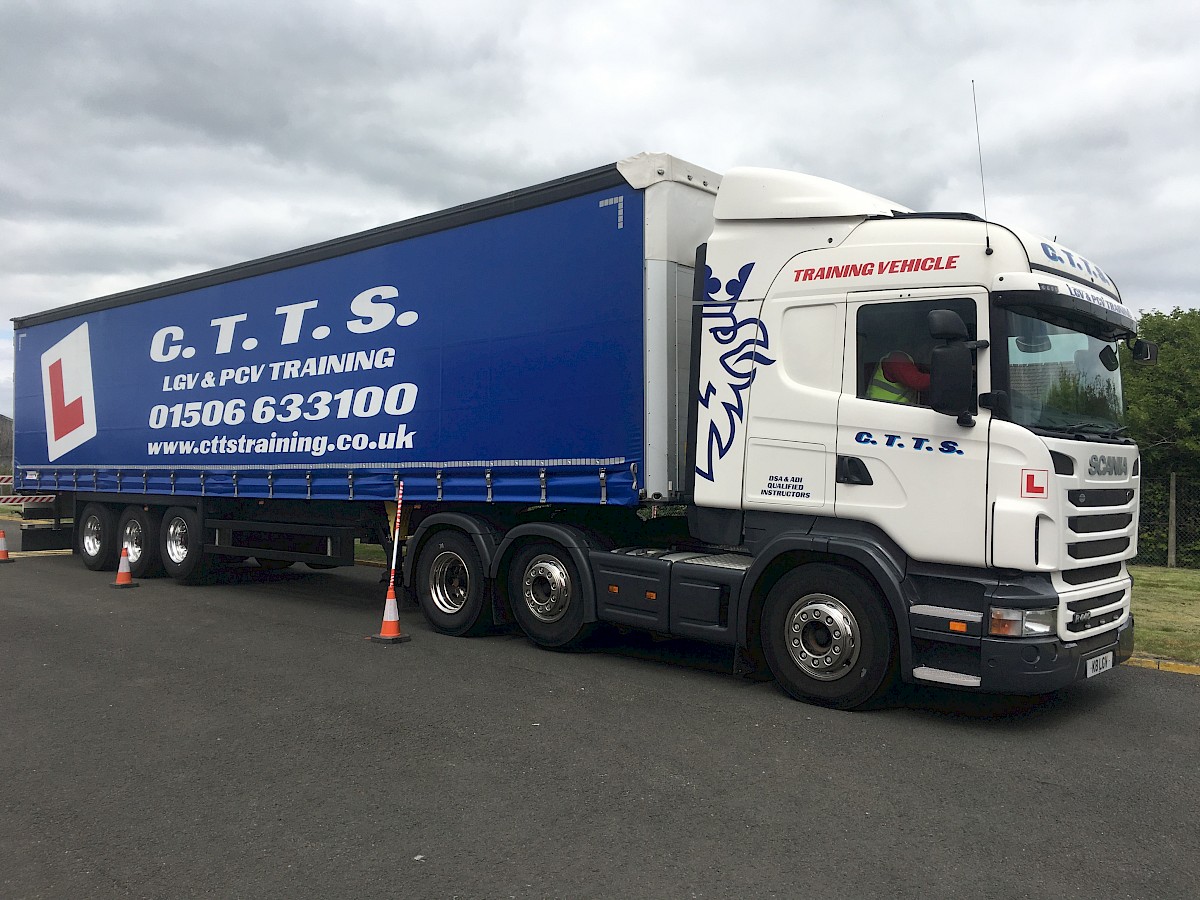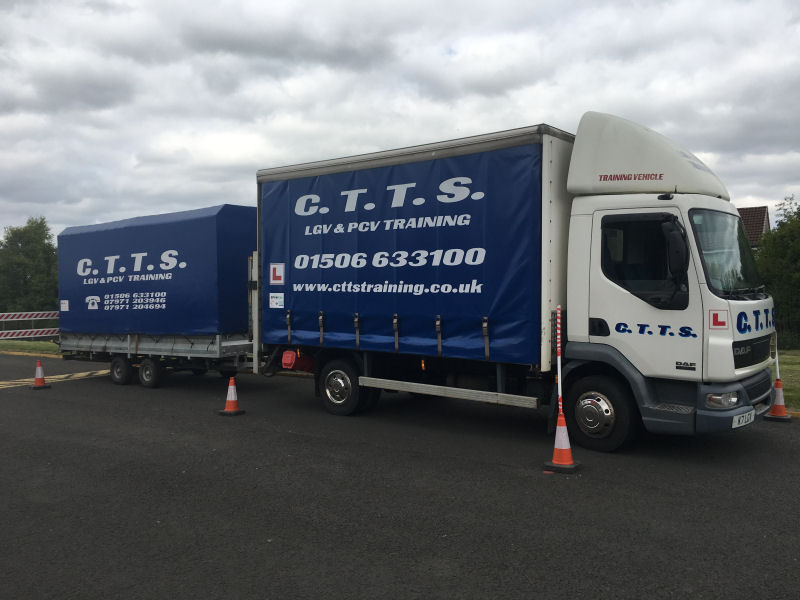Information
Getting Started
Before you can begin your Driver Training with CTTS Training, there are a few things that you need to do before climbing into one of our vehicles.
We've set out below the correct course of action you should take to ensure that all the paperwork is in order before beginning your course.
Obtaining a Provisional Licence
In order to obtain a Provisional licence, you will need to obtain Forms D4 (Medical Form) and D2 (Licence Application Form). These are available from any Post Office or from us on request. Provisional licences are now provided free of charge.
Medical
This can be arranged with your GP, who will charge for this service. Medicals can also be arranged by us, see our rates page for details. The GP must fill in the medical form which should be submitted together with your licence application Form.
Theory Test
From 4th August 2008, the LGV and PCV theory test was changed to form part of the Driver CPC and was divided into 2 modules, the first module being the Multiple Choice Test (MCT) and the second being the Hazard Perception Test (HPT). The two parts may be taken at various times but both must be passed to achieve a valid theory test pass.
If one of the modules is failed you will only need to retake that module and not the whole test.
Driver CPC
From 10th September 2008 (PCV) and 10th September 2009 (LGV), new drivers will have to undertake the new Driver CPC as part of their driver training.
For further details of Driver CPC, see our Driver CPC section
Driver Training
With the theory tests out of the way, it's time to get behind the wheel. We will pre-book your test and arrange your driver training around the test date. We will instruct you on all aspects of driving including driver's hours and Tachograph training included as standard.
What can CTTS offer?
Owners/Instructors trained to the DSA standard and registered with the DSA.
Instructors who between them have a solid background based on extensive training and experience in the field of driver training and associated legislation. Up to date modern vehicles backed by the main dealer support.
Vehicles with manual gearboxes therefore ensuring widest possible job opportunities for successful drivers.
An understanding of the requirements of the industry and the problems faced by newly qualified drivers, including Services leavers, in finding employment.
Drivers job placement scheme for drivers meeting the required standards in conjunction with a network of industry contacts
The Training offered by C.T.T.S.
- Training and practice for the required theory tests
- Training in categories C, C+E and PCV to test standard
- Training in load handling and load security, including the use of tail lifts
- Tachograph legalisation
- Drivers' hours legislation
- Post test development training (Training for Industry)
- Forklift counterbalance and reach
- Instructor training
- Refresher training
- SAFED training

Licence Categories and Age Restrictions
The terms "HGV" and "PSV" have now been replaced by LGV (Large Goods Vehicle) and PCV (Passenger Carrying Vehicle).
| Entitlement | Means you can drive | Min Age | |
|---|---|---|---|
| B | Car, van, Pick up | Motor vehicles not exceeding 3500kg having not more than 8 passenger seats with a trailer up to 750kg. | 17 |
| B+E | As above plus trailer | Combinations of vehicles consisting of a vehicle in category B and a trailer over 750kg. | 17 |
| C1 (HGV3) | Small lorry | Lorries between 3500kg and 7500kg with a trailer up to 750kg. | 18 |
| C1+E | Small lorry plus trailer | Combinations of vehicles where the towing vehicle is in subcategory C1 and its trailer has a MAM of over 750kg, provided that the MAM of the combination thus formed does not exceed 12000kg, and the MAM of the trailer does not exceed the unladen mass of the towing vehicle. | 18 |
| C (HGV 2) | Rigid lorry | Vehicles over 3500kg with a trailer up to 750kg. | 18 |
| C+E (HGV 1) | Articulated / drawbar lorry | Vehicles over 3500kg with a trailer over 750kg. (If you require information on the C+E can you please indicate whether you currently hold a Cat C licence?) |
18 |
| D1 | Mini-bus | Vehicles between 9 and 16 passenger seats with a trailer up to 750kg. | 18 |
| D1+E | Mini-bus plus trailer | Combinations of vehicles where the towing vehicle is in subcategory D1 and its trailer has a MAM of over 750kg, provided that the MAM of the combination thus formed does not exceed 12000kg, and the MAM of the trailer does not exceed the unladen mass of the towing vehicle. | 18 |
| D | Bus | Any bus with more than 8 passenger seats with a trailer up to 750kg. | 18 |
| D+E | Bus plus trailer | Any bus with more than 8 passenger seats with a trailer over 750kg. | 18 |
| All weights in the table above refer to maximum authority mass (MAM). The term maximum authorised mass (MAM), which is also known as gross weight and permissible maximum weight, is the maximum weight of the vehicle that may be used on the road including the maximum load that the vehicle may safely carry. This is normally shown on a plate fitted to the vehicle. |
|||
Training for Industry/Refresher Training
Industry Training consists of a minimum of one week's training. Refresher training is as per client's requirements. You select the duration and the course. This training will be certified upon successful completion of the various elements of the training package. An ADI Instructor with over 20 year's commercial experience will carry out certification. The contents of this weeks training will consist of the following elements.
Driving a laden vehicle
This will be carried out on full size, fully loaded vehicles (44T) in order to gain experience in the different handling characteristics, driving techniques and road craft associated with fully laden vehicles. The use of both cruise control and exhaust brakes/retarders will be explained and encouraged with regard to achieving maximum fuel efficiency and minimum wear and tear on the vehicle.

Loading and the load security of various loads
This will cover load characteristics, weight distribution, load stability and its effects on the vehicle handling. Load securing equipment i.e. various straps, ropes, chains, chocks & blocks. These will be demonstrated and practised in order that the driver not only understands the importance of load security but has practised, under supervision the various techniques used to achieve this. Roping and sheeting will also be demonstrated and practised. In the case of Cat.C the use of a tail lift will again be demonstrated and practised.
Tachographs and Driver's Hours
This will cover current Tachograph legislation and the use of various types of Tachograph currently used within the Industry. Driver's hours will be explained and covered in depth; this will include all aspects relative to the law. Also covered will be emergency regulations and examples of what constitutes an emergency, and what to do in the event of such an occurrence. The importance of driving within the law will be enforced through examples and discussion.

Coupling and Uncoupling
This will cover the demonstration and practice in the use of skid rails and air suspension. Encompassing lift axles to ensure the safe and competent use of these techniques.
Driver's daily checks and Basic maintenance : This will cover the daily checks prior to driving both the vehicle and trailer in order to ensure the roadworthiness of the vehicles and their compliance with legislation. Basic fault diagnosis will also be covered.





